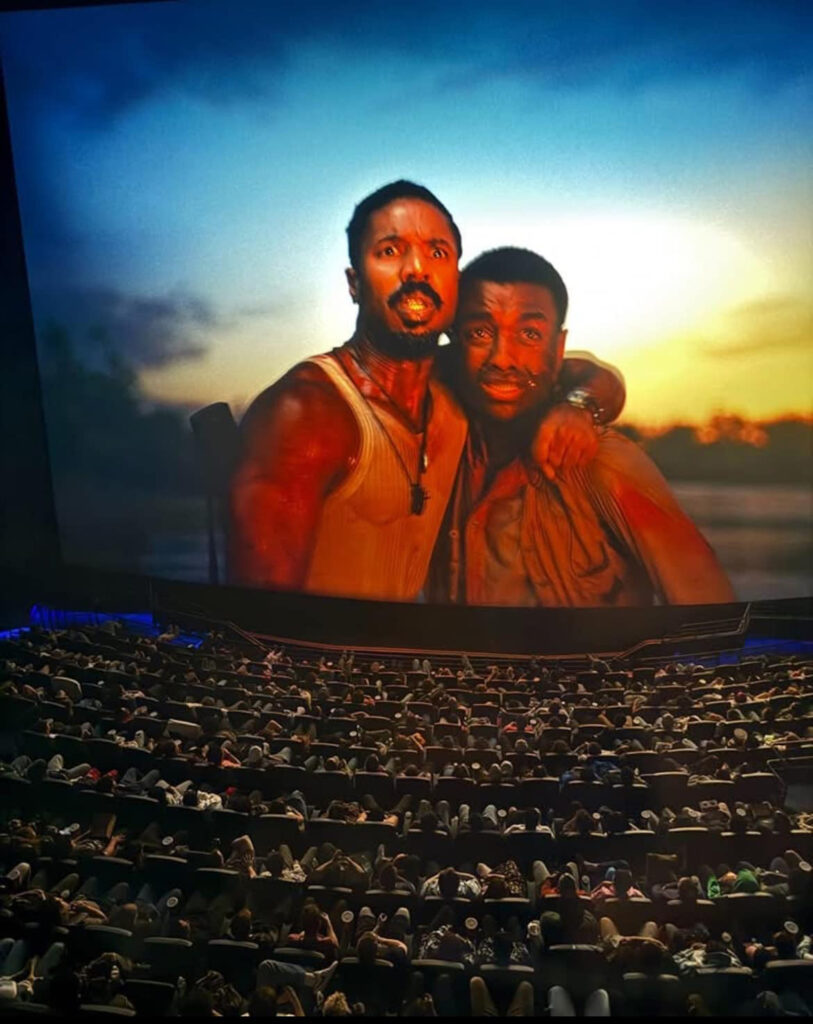Don’t let the headline excite you or fool you. An IMAX theater is not coming to Rutland, or anywhere else in Vermont for that matter, any time soon. And if I know Vermont like I have over the past decade, it’s never coming, so don’t hold your breath. Anytime the request for a new movie theater in Rutland gets tossed around, Mayor Doenges is quick to respond: “Movie theaters aren’t economically viable anymore.” He isn’t completely wrong. Still, if I were an investor looking to bring big-screen entertainment back to the area, I’d look to the biggest and best cinematic experience around, and that is IMAX.
If you live in Vermont and are a movie fan, it is more than likely you’ve heard of IMAX, but there is a better-than-average chance you haven’t seen a movie in an IMAX theater unless you’ve traveled to one outside of Vermont. There are currently no IMAX theaters in Vermont. The closest location, depending on what area of Vermont you live in, is at the Crossgates Mall in Albany, New York. There is also an IMAX theater at the Cine Banque Scotia in Montreal, Canada. The largest area IMAX theater is located in Reading, Massachusetts, at Jordan’s Furniture. That’s the IMAX theater I frequent. It’s a three-hour drive from my home, but for epic cinema experiences, it’s a drive worth taking.
I used to live in Massachusetts, which made it far easier to get to Jordan’s Furniture IMAX and trust me, I saw every big-screen event movie there. Since I moved to Vermont in 2015, my visits have been less frequent, but I still manage to get there three to four times a year.
Why IMAX?
Simply put, no cinema offers the same level of picture and sound quality as an IMAX theater. The IMAX presentation is immersive. The sound emanates from speakers throughout the auditorium, and depending on the IMAX venue, some theaters even feature bass boosters built into the seats.
Now, not all IMAX theaters are the same, and some theaters with the IMAX brand can be a ripoff. They are known on social media as LIEMAX. These theaters are not as large as traditional IMAX theaters, and their screen sizes are also smaller. The screen height may be taller than that of a conventional movie screen, and the sound quality will be better than that of your average multiplex. Still, it is not necessarily worth shelling out extra money for the experience. The Crossgates Mall has one of these LIEMAX cinemas. Not only do they charge an arm and a leg for a ticket, but the screen is far smaller than those at the AMC Theater in Saratoga Springs or the T-Rex Theater in Essex Junction. If you are looking for the true IMAX experience, the Jordan’s Furniture in Reading is the place to go. They are one of a handful of IMAX theaters in the U.S. that feature laser projection technology, and they have a massive screen that can show movies shot in the gigantic IMAX format aspect ratio.
Okay, so what does that all mean? It’s a good question. What does it mean when a film is shot using IMAX cameras or formatted for IMAX screens? A typical movie, when it used to be shot on film or shot with today’s digital cinema cameras, shoots a rectangular frame that’s the equivalent of 1.81: 1 (or 1.81 inches wide by 1 inch tall) or if they are shooting their film widescreen or scope, they would likely be shooting an aspect ratio of 2.35: 1. IMAX, which began its life as a specialty format found in science museums and aquariums, creating nature or adventure docs with massive cameras that were meant to be projected on giant curved screens to make audiences feel like they were in the movie, shoot an aspect ratio of 1.43:1. This ratio creates an almost square like image from either film or digital that can capture a large image—still confused? I know it’s technical, but directors like Christopher Nolan have been shooting sequences of their movies with IMAX cameras to give certain scenes more impact. Nolan was one of the first filmmakers to utilize IMAX cameras for narrative features, shooting several scenes of “The Dark Knight” in IMAX. When these scenes play back in an actual IMAX theater, the entire screen fills with an image, dazzling the audience.
Ask anyone who saw “Top Gun: Maverick” in an actual IMAX theater what those air sequences were like. How about a film like “Gravity,” where most of the scenes were filmed in 3D to fit the enormous IMAX canvas? There isn’t another cinematic experience I can compare it to.
So, why an IMAX theater in Rutland, of all places?
Again, my desire for an IMAX theater located on my home turf is more than just selfishness. Such a theater could prove financially successful. Look, I couldn’t imagine the investment required to build a standalone IMAX theater in the city. The only place where you might find enough available land to do it would be up at the Diamond Run Mall location. If that Walmart relocation were to happen and there was still room to build such a theater, the combo could make it a win-win for the town. You wouldn’t be catering to the movie-hungry needs of Rutland; you’d be a draw for all over the state and neighboring areas, too.
An IMAX theater costs more, and people gladly pay the extra for the experience. A ticket at the Reading IMAX currently costs $16. I’d pay that every week to see an IMAX movie right here. While the movie industry is in a slump, and audiences are not going out to see movies as they used to, IMAX theaters consistently account for 30-40% of a hit film’s box office. It’s a primary reason why recent hits, such as “Sinners,” “Mission Impossible,” and “Lilo and Stitch,” are achieving such big box office results. People are flocking to see them in IMAX. As I mentioned earlier, the reality of Rutland or any other place in Vermont getting a true IMAX theater is remote. But as the ghostly cornfields of Iowa once whispered to Kevin Costner, “If you build it, they will come.”
James Kent is the arts editor at the Mountain Times.

A recent screening of the film”Sinners” at an IMAX theater, showcasing the movie on one of the largest formats available.



